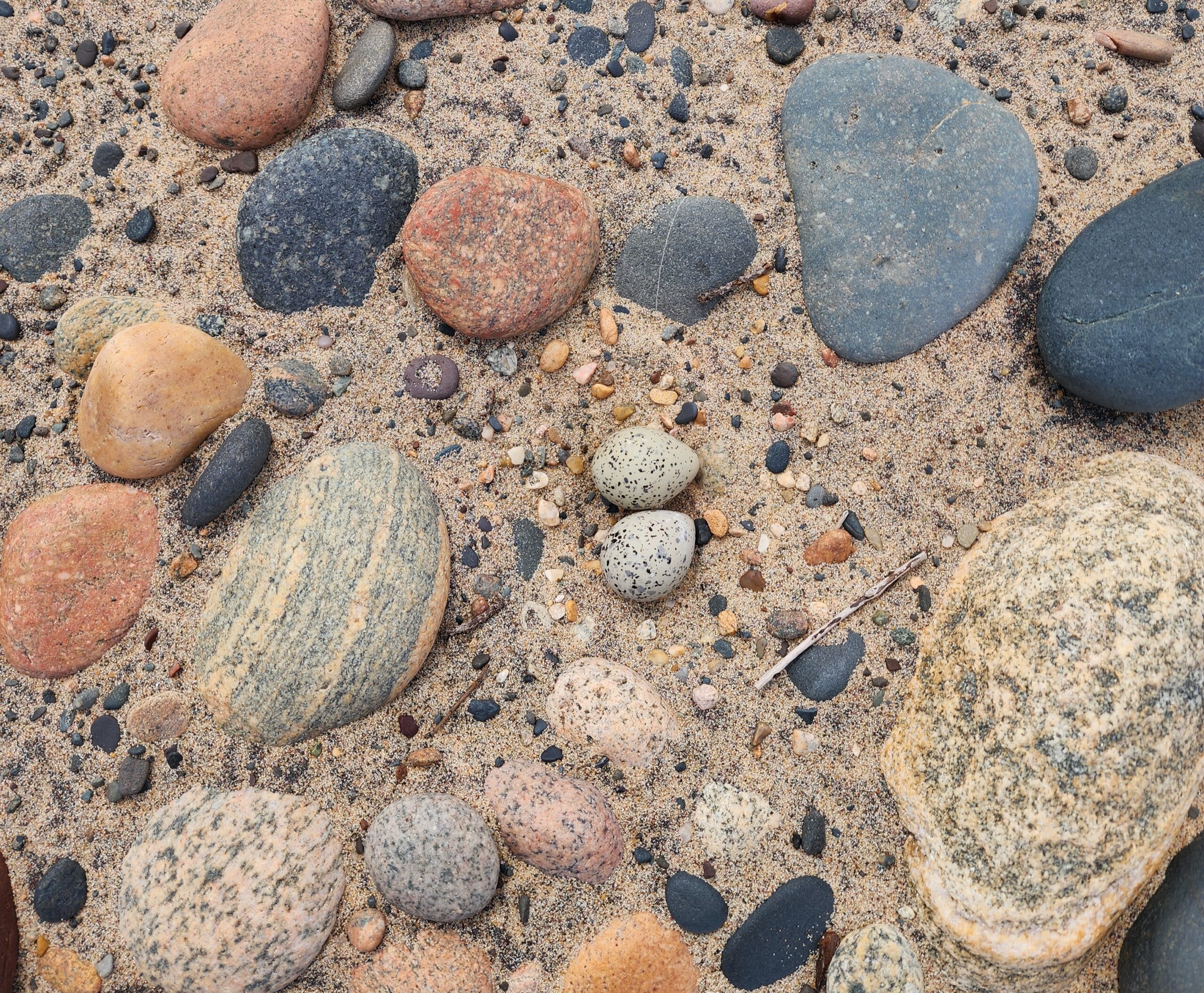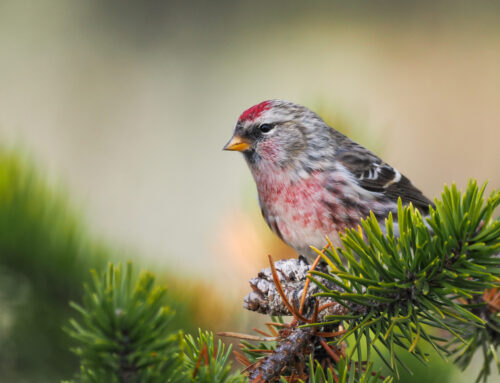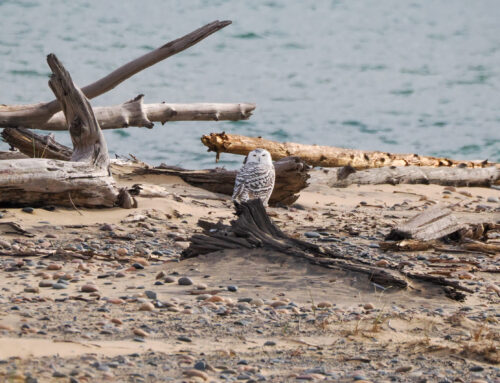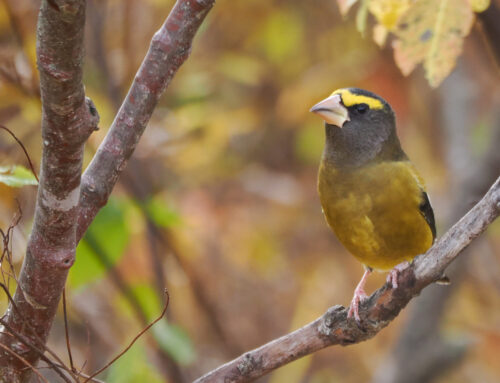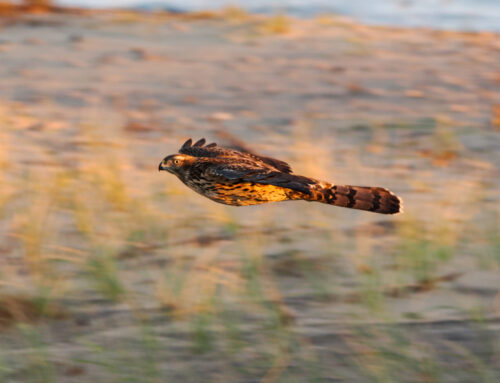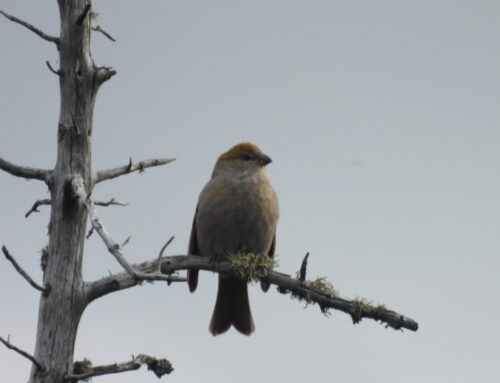Whitefish Point
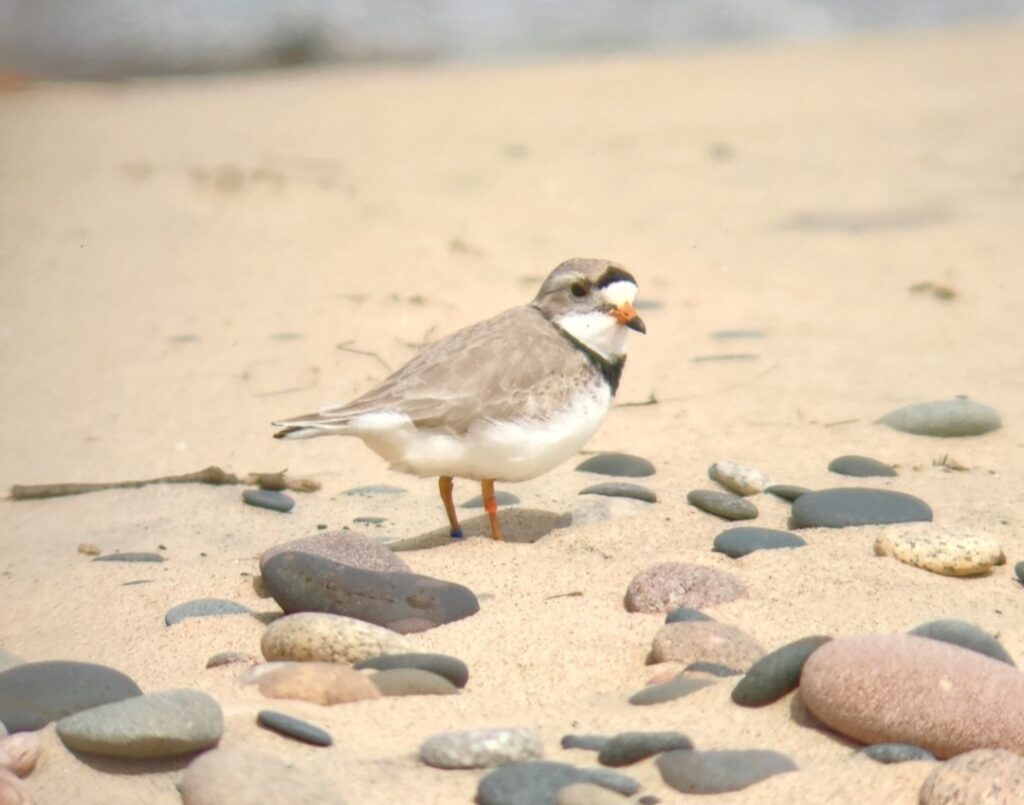
PIPL X,B:-,O Male from Vermilion Point. Photo by Stephanie Owens
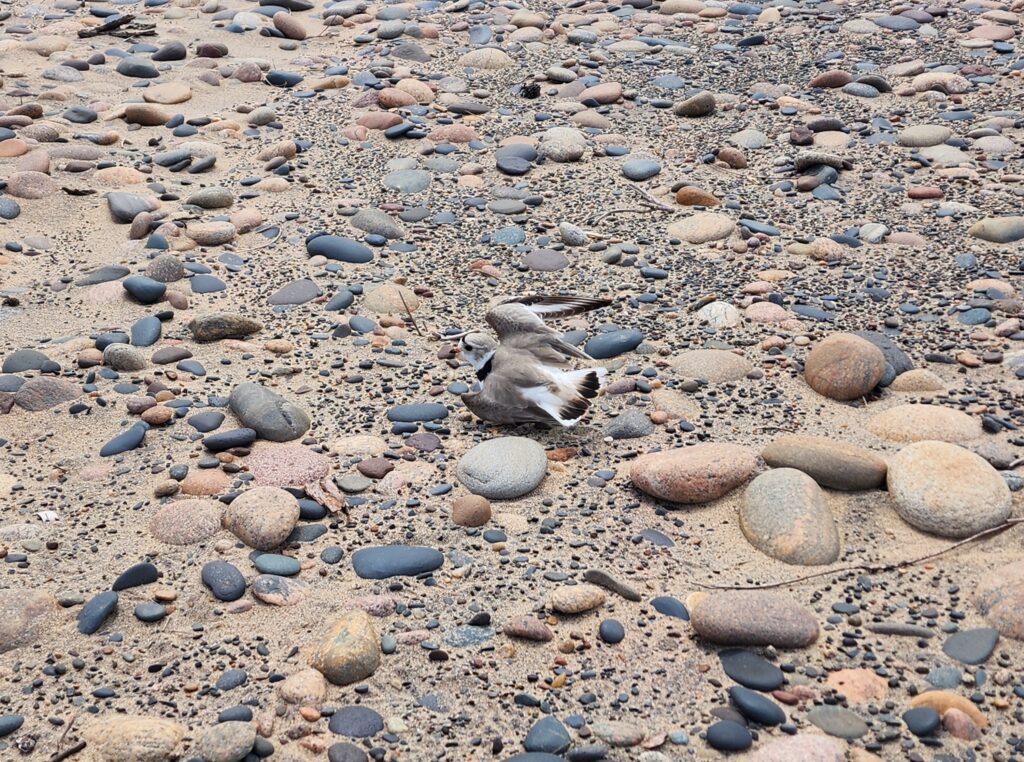
PIPL Little Bill Bob performing a broken-wing display. Photo by Stephanie Owens
Little Bill Bob and Vie had been taking the past week slow, and I don’t blame them. It must be hard work growing eggs and deciding where to nest for the summer. They spent their days foraging on the far eastern edge of the Seney Wildlife Refuge property, scraping and copulating from time to time.
I was eager for them to begin a nest but wishing they would do so in a more convenient area, like the already-closed-off beach to the left of the boardwalk. Some days they would copulate on the beach directly in front of the Shipwreck Museum, which caused me to shake my head. This heavily visited area was not an ideal place to rear their young.
Some days I would give them privacy by checking on the plovers at Vermilion Point.
From May 18 to the 20th Vie and Bob were not seen. I wondered if they were visiting remote areas nearby that went unchecked, focusing on that possibility rather than the worst – predation.
On the morning of Wednesday the 21st, I ventured from the closed-off area down to the harbor expecting to spot the pair. I had no luck. This behavior was familiar though, as last year they frequented further east and disappeared before nesting in between the boardwalk and sandy entrance by the Museum.
I was elated to find the two on my way back, foraging on the beach in front of the Museum. The feathers on Vie’s rear looked disheveled, suggesting egg-laying activity. Slowly they worked their way east. I hid behind large pieces of driftwood trying to stymie the harsh chilly wind, peaking out to check on the plovers. Bob began heading east, entering the closed-off area. And then for a few minutes I couldn’t spot either of the pair. I stepped cautiously along the cobble, waiting to hear a peep notifying me of their presence. I soon spotted Bob lingering near their nesting area from last year. I observed him from afar and saw him nestle in a pocket of sand. When a plover sits on a nest they have a particular way of shimmying their body on the eggs, making sure they are all tucked beneath. He started picking up pebbles with his bill and placing them particularly. I approached with care, and Bob moved away from the nest performing a broken wing display. A plover will do this to lure predators away from their eggs, faking as if their wing is injured. And there I saw two lovely eggs sat neatly in a scrape.
I promptly placed a mini exclosure atop to protect the nest. Once four eggs have been laid, Vie and Bob will begin incubating. Until then Bob keeps an eye on his prospective young.
Vermilion Point
I was quite excited to begin surveying Vermilion Point, as I’ve never monitored there before. Until my arrival the area had not been searched for plovers yet this season. It was a new area for me with all new plovers.
It was exciting to find two pairs on my first visit. Those being X,B:-,O (Male) and Of,bN:X,Y (Female aka Bunny). Also X,-:O,B (R dot, B239) (Male) and X,-:O,B (G dot, B258) (Female).
Bunny had visited Whitefish Point on her trip down south in July last year, accidentally leading Hot Shot into thinking he had finally found a mate. The two plovers from the latter pair are WFP fledges from differing years, and the female had nested at Vermilion last year.
On Saturday May 17 I discovered Bunny’s nest. It currently has a mini exclosure, with a mid-sized one to go up soon. I look forward to finding the second pair’s nest, though it may prove tricky due to reports of that female being sneaky the previous year.
Featured Photo: PIPL Vie and Little Bill Bob Nest, May 21 by Stephanie Owens
Piping Plover monitoring is a collaborative effort between Michigan Audubon and Seney National Wildlife Refuge (USFWS).
You can keep up with the 2025 Piping Plover action at WPBO by reading Stephanie’s blog posts and following WPBO’s social media (Facebook, Instagram, and X).
Stephanie Owens: 2025 Piping Plover Monitor
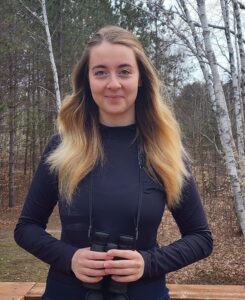 Having grown up in the Upper Peninsula of Michigan, an appreciation of the outdoors seemed inevitable for Stephanie. Walks in the woods with her father and high school science courses helped her identify this passion. In 2024, she earned a Bachelor of Science in Conservation Biology from Lake Superior State University, where she completed her senior thesis on the distribution of per- and polyfluoroalkyl substances in Eastern Upper Peninsula waterways. Now, with three seasons of PIPL monitoring under her belt, she looks forward to another summer with the U.P. plovers and returning to WPBO after a successful ’24 season. After the end of last season, Stephanie began her work at Eva Burrell Animal Shelter as a canine caretaker, fostering hope and love for all animals there.
Having grown up in the Upper Peninsula of Michigan, an appreciation of the outdoors seemed inevitable for Stephanie. Walks in the woods with her father and high school science courses helped her identify this passion. In 2024, she earned a Bachelor of Science in Conservation Biology from Lake Superior State University, where she completed her senior thesis on the distribution of per- and polyfluoroalkyl substances in Eastern Upper Peninsula waterways. Now, with three seasons of PIPL monitoring under her belt, she looks forward to another summer with the U.P. plovers and returning to WPBO after a successful ’24 season. After the end of last season, Stephanie began her work at Eva Burrell Animal Shelter as a canine caretaker, fostering hope and love for all animals there.

